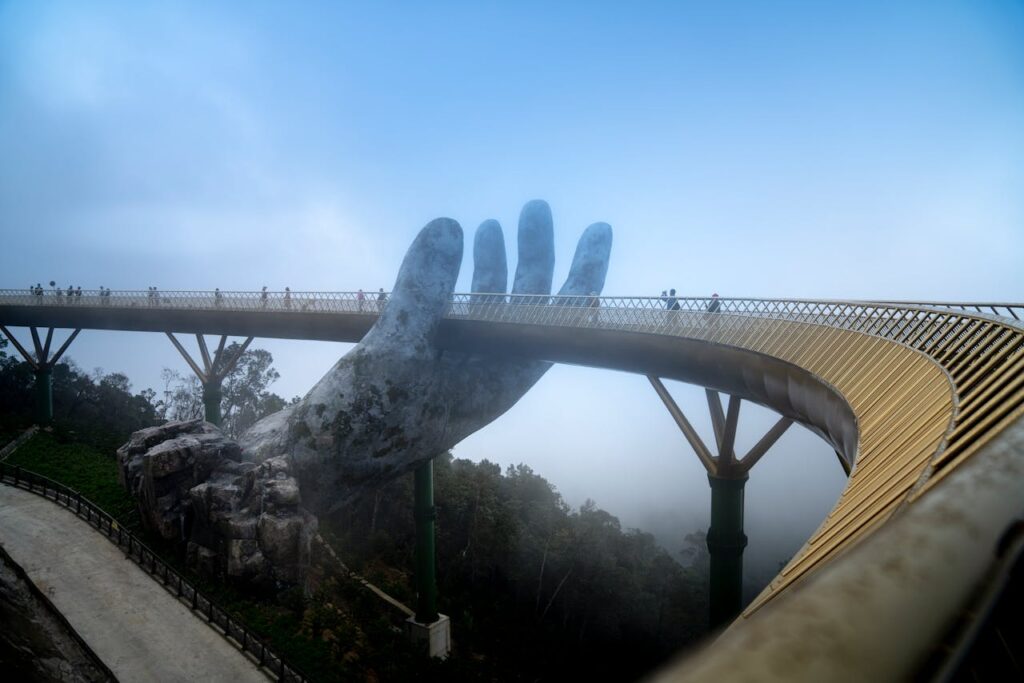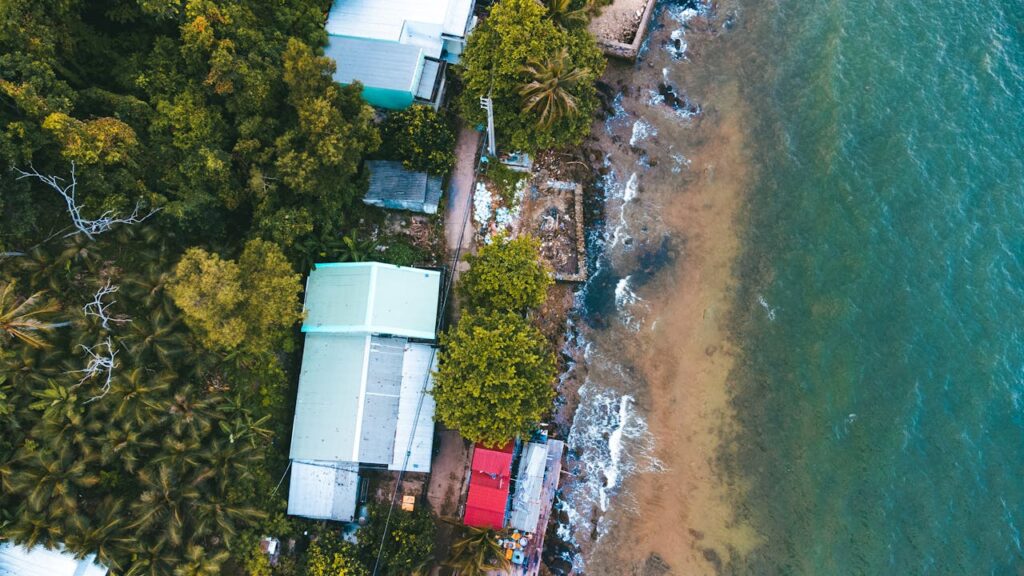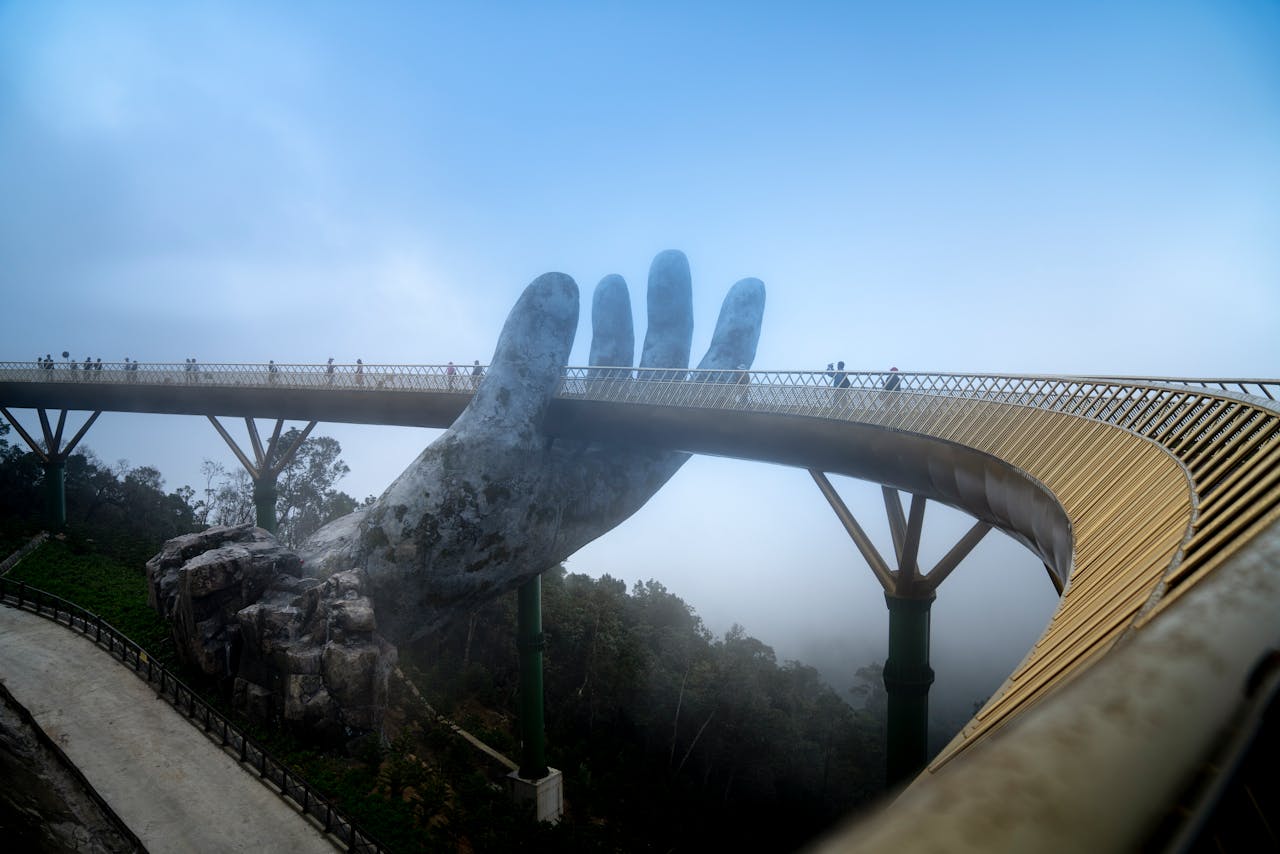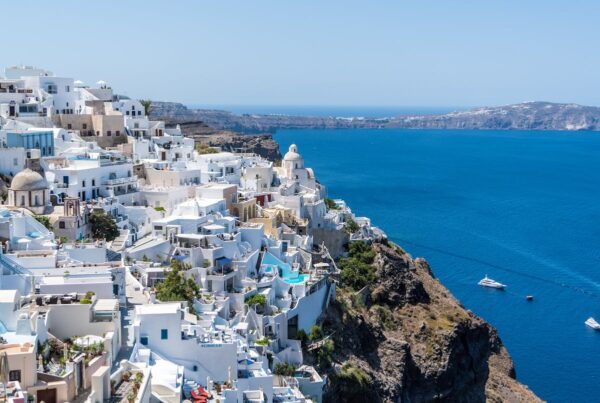A Deep, Story-Rich, Insider-Led Guide for Travelers Planning Their Vietnam Trip in 2026
Vietnam has always been a traveler’s favorite, but 2026 marks a new era for this Southeast Asian gem. With improved infrastructure, expanded e-visa options, cleaner beaches, upgraded national parks, and a booming café and digital nomad culture, Vietnam has evolved into a destination that pleases both backpackers and luxury seekers.
What makes Vietnam particularly addictive isn’t just its natural beauty—though the rice terraces, beaches, mountains, and limestone cliffs certainly help. It’s the spirit of daily life: the early-morning markets, the street-side coffee stalls, families gathered around hot pots, the rhythmic hum of motorbikes, and the warm, genuine hospitality that sticks with you long after your trip ends.
This Ultimate Vietnam Travel Guide 2026 is designed to help you plan the perfect itinerary, avoid common mistakes, and experience Vietnam like a local. It’s written with rich detail, storytelling, and up-to-date insights—perfect for a long, evergreen blog post.
1. Why Vietnam Should Be on Your 2026 Travel List

Vietnam has undergone subtle but meaningful changes in the last few years. Roads are better. Airports have expanded. Islands are cleaner. National parks have added new trails. And yet Vietnam has managed to retain the exact charm that travelers fall in love with.
1.1. Diversity in Every Mile
You can wake up in a foggy mountain village, eat lunch beside a rice field, and fall asleep in a modern city or a beach resort—all in the same day. The country is incredibly diverse:
North: Mountains, ethnic villages, ancient streets, misty landscapes
Central: Ancient towns, imperial cities, golden beaches, cultural treasures
South: Vibrant nightlife, island escapes, river life, tropical warmth
1.2. Excellent Value for Money
Vietnam remains one of the best-value travel destinations in Asia. Even with rising tourism, you can still find delicious meals under $2, comfortable hotels for under $25, and beautiful resorts at a fraction of what they cost in other regions.
1.3. A Food Culture that Changes Every Few Kilometers
From Hanoi’s smoky grilled pork to Hue’s imperial dishes to Saigon’s sweet and spicy southern flavors, Vietnamese cuisine evolves dramatically across regions. Every town has its own version of “authentic.”
1.4. Improved Accessibility in 2026
Faster intercity buses
New coastal expressways
Expanded e-visa system
Cleaner, better-managed beaches
Travel has never been easier.
2. Best Time to Visit Vietnam in 2026

Vietnam spans multiple climate zones, so weather varies dramatically. The “best time” depends on where you’re going.
Top Overall Months (Most Comfortable Weather Across Vietnam)
February – April
November – mid December
These months offer:
Mild temperatures
Low humidity
Clear skies
Great trekking and beach conditions.
2.1. Northern Vietnam Weather (Hanoi, Sapa, Ha Long Bay)
Best Time: October – April
This is the ideal season for exploring Northern Vietnam. The air is crisp, skies are clear, and temperatures stay comfortable—perfect for wandering Hanoi’s Old Quarter, cruising through Ha Long Bay, or trekking in Sapa. The landscapes are at their most photogenic during these months, with golden light, cool breezes, and minimal rainfall. If you’re looking for pleasant weather and smooth travel, this period offers the most reliable experience.
Chilly Months: December – January
Winter in the north is noticeably cold, especially in mountain areas like Sapa and Ha Giang where temperatures can dip below 10°C. Even Hanoi feels distinctly brisk. While it’s not freezing, you’ll definitely want warm layers. Despite the chill, this season has a certain magic—fog rolling across limestone peaks, quiet city mornings, and steaming dishes that taste even better in cold weather. It’s a moodier, more atmospheric version of Vietnam that many travelers fall in love with.
Avoid: June – August (Heat + Heavy Rain)
Northern summers can be challenging for travel. The heat is intense, humidity is at its highest, and heavy rains often arrive in sudden bursts. Trekking paths in Sapa can get muddy and slippery, and Ha Long Bay cruises may face weather-related delays or cancellations. If you prefer comfortable sightseeing and predictable plans, this period is worth skipping.
A Romantic Winter Atmosphere
Winter brings a soft, poetic vibe to Northern Vietnam. Lakes in Hanoi turn misty in the early morning light, cafés glow warmly as locals sip egg coffee, and the scent of pho fills cool evening air. In Sapa, clouds drift gently over terraced fields, creating dreamy views perfect for slow travel and photography. It’s the season where the north feels intimate, cozy, and quietly beautiful—an experience that lingers long after you leave.
2.2. Central Vietnam Weather (Hue, Da Nang, Hoi An)
Best: February – August
Central Vietnam enjoys some of the most consistent sunshine in the country during these months. From late winter through mid-summer, you can expect clear skies, warm breezes, and excellent beach conditions—especially in Da Nang and Hoi An. February to April brings cooler, comfortable temperatures that are perfect for exploring Hue’s imperial tombs or cycling through rice fields.
By May to August, beach season is in full swing. Da Nang’s coastline turns into a vibrant, energetic strip, while Hoi An’s An Bang Beach becomes a favorite spot for swimming, sunbathing, and seafood dinners along the shore. It’s simply the best time for travelers seeking a mix of history, culture, and seaside relaxation.
Risky Months: October–November (typhoons possible)
This period marks the peak of the rainy season in Central Vietnam, with occasional typhoons bringing strong winds and heavy downpours. Hue is especially prone to rainfall, and Hoi An sometimes experiences short-term flooding, particularly in the old town. Outdoor activities and boat tours may be disrupted, and the weather can shift quickly from calm to stormy.
Traveling during these months is still possible—but flexibility is key. Lower hotel prices, quieter streets, and misty skies can make for a unique experience if you’re prepared for unpredictable weather.
If you’re visiting Hoi An for its lantern festivals, check the full moon dates.
Hoi An’s Lantern Festival happens once every lunar month, lighting the entire ancient town with colorful lanterns, glowing candles, and traditional performances. The timing is magical, but since it revolves around the lunar calendar, dates change each year—so plan ahead.
2.3. Southern Vietnam Weather (Ho Chi Minh City, Mekong Delta, Phu Quoc)
Best: November – April
Southern Vietnam offers warm, tropical weather year-round, but November to April is the most pleasant period. These months bring steady sunshine, low rainfall, and ideal conditions for exploring Ho Chi Minh City’s vibrant streets, cruising along the Mekong Delta, or relaxing on Phu Quoc’s stunning beaches.
Temperatures stay warm but not overwhelming, making it easy to enjoy everything from street food tours to island hopping. If you’re dreaming of blue skies and calm seas, this is the perfect time to visit the south.
Rainy: May – October (short, tropical showers)
While this is the rainy season, the showers are typically brief—usually lasting an hour or two in the afternoon. Mornings remain sunny and bright, and travel generally continues without major disruption. The landscape becomes lush, green, and photogenic, especially in the Mekong Delta.
Phu Quoc and Ho Chi Minh City both stay lively during these months, but seas can be rougher at times, especially from July to September. If you don’t mind occasional rain and slightly more humidity, the south remains a great destination year-round.
3. Vietnam Visa Rules in 2026
Vietnam continues to expand and modernize its visa system, making it easier than ever for international travelers to enter the country. In 2026, the e-visa program covers more nationalities, processing times are faster, and travelers have more flexible options for both short and long stays.
3.1. E-Visa (30–90 Days)
he Vietnam e-visa remains the most convenient option for visitors in 2026. It’s entirely digital, easy to apply for, and approved for travelers from most countries.
Most nationalities can choose from:
30-day single entry (great for short trips)
90-day multiple entry (ideal for long stays or regional travel)
The application process is straightforward:
You fill out the online form, upload a passport photo, pay the fee, and wait for approval—usually 3–7 business days. Once approved, the e-visa is emailed directly to you.
This option works for both tourists and business travelers, making it the most popular choice for 2026.
3.2. Visa-Free Entry
Vietnam also offers visa-free entry to certain countries, allowing travelers to stay between 15 and 45 days depending on nationality. This is perfect for quick vacations, slow travel, or regional trips where you’re hopping between Southeast Asian countries.
While visa-free entry is convenient, keep in mind:
It may not be extendable inside Vietnam
Overstaying can result in fines
Requirements vary by passport
Always double-check your specific country’s rules before traveling.
3.3. Visa on Arrival
Visa on Arrival (VOA) is still available in 2026, but with updated rules.
It requires a pre-approval letter issued by an official travel agency or visa service before you fly. Once you land at one of Vietnam’s international airports, you present the letter, pay the stamping fee, and receive your visa.
However, VOA is no longer the easiest method—it’s mainly used by travelers who need urgent entry or have complications with the e-visa system.
4. Best Places to Visit in Vietnam (2026 Edition)
Vietnam is a country where ancient traditions blend effortlessly with modern life. From misty mountains in the north to turquoise seas in the south, every region offers its own rhythm, atmosphere, and stories. This section takes you on a journey from North → Central → South, highlighting iconic landmarks as well as hidden gems worth adding to your 2026 itinerary.
4.1. HANOI – The Heartbeat of Northern Vietnam
Hanoi is a captivating mix of heritage and modern creativity. Ancient pagodas sit next to hipster cafés; French colonial mansions stand across from towering skyscrapers. Yet behind the chaos of scooters and markets, there’s a poetic charm that makes Hanoi unforgettable.
Top Things to Do
Watch sunrise at Hoan Kiem Lake – Early mornings here feel calm and spiritual. Locals practice tai chi as the city slowly wakes up.
Explore the Old Quarter – Wander through narrow alleyways filled with tailor shops, herbal medicine stalls, and tiny noodle shops.
Try egg coffee – A creamy Hanoi specialty with a sweet, velvety foam.
Visit the Temple of Literature – Vietnam’s first university, built in 1070.
Learn at the Ethnology Museum – A great introduction to Vietnam’s 54 ethnic groups.
See the famous Train Street – Where trains pass inches from homes. Always go to a regulated café for safety.
Recommended Experiences
Join a street food tour – Try bun cha, pho, banh cuon, and more with local guides.
Cycle around West Lake – Peaceful, scenic, and great for sunset.
Take a pottery workshop in Bat Trang Village – A creative side trip just outside Hanoi.
What Makes Hanoi Special
Hanoi’s magic lies in the rhythm of daily life—vendors cycling with flower baskets, elderly couples dancing by the lake, teenagers in vintage outfits posing for photos. It’s a city rich in personality, where tradition and modern culture blend seamlessly.
4.2. HA LONG BAY – A Timeless Masterpiece
Ha Long Bay remains one of Asia’s most iconic landscapes. Thousands of limestone karsts rise from emerald waters, creating a mystical seascape that feels straight out of a fantasy film.
Why Visit
World-class photography opportunities
Incredible sunrise views over the bay
Adventure options like kayaking, caving, and hiking
Luxury cruises more sustainable than ever
Top Activities
Overnight cruise – The best way to experience the bay’s beauty.
Kayaking in Lan Ha Bay – Quieter, cleaner, and more serene than the main bay.
Visit floating villages – Meet local families who live entirely on the water.
Explore Sung Sot Cave – One of the bay’s most impressive caverns.
Insider Tip
Skip the rushed day trip. A 2-day, 1-night cruise offers calm mornings, quiet sunsets, and time to explore without crowds.
4.3. NINH BINH – Ha Long Bay on Land
Ninh Binh is like stepping into a painting—limestone peaks, emerald rice fields, and peaceful rivers drifting between ancient caves. It’s stunning, quiet, and authentic.
Must-See Attractions
Trang An boat tour – Glide through caves and lush valleys; incredibly scenic.
Mua Cave viewpoint – Climb 500 steps for one of Vietnam’s best panoramas.
Tam Coc fields – Rice paddies surrounded by dramatic cliffs.
Bai Dinh Pagoda – A massive Buddhist complex with gold statues and sweeping views.
Why It’s Unmissable
Ninh Binh offers the beauty of Ha Long Bay without the crowds. It’s perfect for slow travel, photography, countryside cycling, and peaceful nature retreats.
4.4. SAPA – Vietnam’s Mountain Kingdom
Sapa is where Vietnam touches the clouds. The landscape is a majestic blend of terraced rice fields, waterfalls, and villages belonging to ethnic groups like the Hmong, Dao, and Tay.
Top Experiences
Trek through terraced rice fields – The scenery changes beautifully each season.
Stay with a local family – An authentic cultural experience in Ta Van or Lao Chai.
Ride the cable car to Mt. Fansipan – The “Roof of Indochina,” with breathtaking views.
Visit Cat Cat and Ta Van – Charming villages surrounded by rice terraces.
Best Time to Visit
September – November for golden terraces and clear skies.
4.5. HA GIANG – The Legendary Loop
Ha Giang is Vietnam’s last frontier. Rugged, raw, and unbelievably beautiful, this region offers one of the world’s greatest motorbike routes.
Why Go
Untouched landscapes
Dramatic mountain roads
Authentic tribal culture
Less commercial than Sapa
Expect jaw-dropping viewpoints, quiet minority villages, and thrilling rides through narrow, winding passes.
Who It’s For
Adventure seekers, photographers, and travelers who want to explore Vietnam off the beaten path.
4.6. HUE – Vietnam’s Imperial Capital
Hue is calm, elegant, and deeply historical. As the former capital of the Nguyen Dynasty, it’s filled with royal relics, sacred temples, and serene riverside views.
Top Attractions
Imperial City (Citadel) – A UNESCO site with ornate gates and ancient halls.
Royal Tombs – Intricate mausoleums set in tranquil gardens.
Thien Mu Pagoda – A beautiful riverside icon.
Perfume River – Best enjoyed during a slow evening cruise.
Food to Try
Hue’s cuisine is famous for its royal influence—colorful, refined, and flavorful. Don’t miss:
Bun Bo Hue
Banh Beo
Nem Lui
Hue royal desserts
4.7. DA NANG – Clean, Modern, and Beachy
Da Nang is a coastal city with the perfect balance of cleanliness, modern comforts, and natural beauty.
Must-See Spots
My Khe Beach – Clean, long, soft sand, and great for swimming.
Marble Mountains – Caves, temples, and viewpoints.
Son Tra Peninsula – Monkey-filled forests and stunning coastline.
Golden Bridge (Ba Na Hills) – Instagram-famous giant hands holding a bridge.
Why It’s Special
Da Nang feels relaxed yet modern, family-friendly yet fun, scenic yet convenient. It’s a refreshing coastal city with great food and infrastructure.
4.8. HOI AN – The Enchanted Ancient Town
Hoi An is pure magic—lanterns glowing above yellow buildings, riverfront cafés, tailor shops, and cobbled streets full of charm.
Top Experiences
Lantern boat ride – Float glowing wishes along the Thu Bon River.
Cooking class – Learn Vietnam’s freshest dishes.
Cycling to An Bang Beach – A scenic ride through rice fields.
Visit the Japanese Bridge – A symbol of Hoi An’s history.
Why Visit
Hoi An feels like a living postcard. At night, the whole town lights up in warm lantern colors—truly enchanting.
4.9. HO CHI MINH CITY (SAIGON) – Energy, Business, Nightlife
Ho Chi Minh City is fast, futuristic, and always awake. Skyscrapers shine above ancient temples, and every street bursts with energy.
Top Things to Do
Cu Chi Tunnels – A fascinating look into Vietnam War history.
War Remnants Museum – Powerful exhibits.
Notre Dame Cathedral – French colonial architecture.
Nguyen Hue Walking Street – Youth culture and nightlife.
Ben Thanh Market – Souvenirs, food, and local life.
Why Visit
If Hanoi represents tradition, Saigon represents momentum, innovation, and growth. It’s Vietnam at full speed.
4.10. MEKONG DELTA – Life on the Water
he Mekong Delta offers a slow, serene window into traditional Vietnamese river life.
Best Places
Cai Rang Floating Market – Vendors selling fruits and breakfast from boats.
Tra Su Forest – A dreamy mangrove forest with emerald water.
Vinh Trang Pagoda – A beautiful mix of Vietnamese and Khmer architecture.
Why It’s Special
It’s peaceful, lush, and culturally rich—perfect for slow travel and nature lovers.
4.11. PHU QUOC – Vietnam’s Island Paradise

Phu Quoc is a tropical haven known for soft white sands, crystal-clear waters, and beautiful sunsets.
Things to Do
Sao Beach – Powdery white sand and shallow turquoise water.
Snorkeling at An Thoi Islands – Coral reefs & colorful marine life.
Night Market – Fresh seafood and local desserts.
Cable Car to Hon Thom – The longest sea-crossing cable car in the world.
Starfish Beach – Shallow water filled with vibrant red starfish.
Why Visit
Phu Quoc is ideal for honeymooners, families, and luxury travelers. Resorts are world-class, seafood is fresh, and the island has a relaxed, tropical vibe perfect for unwinding.
5. Vietnam Trip Costs (2026)
Vietnam remains one of the best-value destinations in Asia, and even in 2026, prices are traveler-friendly. Whether you’re backpacking or staying in resorts, Vietnam offers excellent value without compromising comfort.
Below is a detailed cost breakdown to help you plan your budget confidently.
5.1. Daily Budget Guide (2026)
Vietnam offers every kind of stay—from eco-lodges to pool villas.
| Traveler Type | Daily Budget | What’s Included |
|---|---|---|
| Budget Traveler | $25–$40/day | Hostel dorm ($6–12), street food + local meals ($6–10), bus/motorbike ($4–10), simple activities ($5–10). Great for backpackers & nomads. |
| Mid-Range Traveler | $45–$90/day | Boutique hotels ($25–45), cafés & restaurants ($10–20), cheap domestic flights, tours like boat trips or cooking classes. |
| Luxury Traveler | $120–$300+/day | 4–5 star hotels, fine dining, private drivers, luxury cruises (Ha Long/Mekong). Ideal for honeymoons & premium travel. |
5.2. Accommodation Costs (2026)
| Type | Average Cost / Night | What to Expect |
|---|---|---|
| Hostels | $6–12 | Clean dorms, social atmosphere |
| Guesthouses | $12–25 | Cozy, friendly, local experience |
| Boutique Hotels | $25–50 | Modern rooms, stylish designs |
| 4-Star Hotels | $50–90 | Pools, city/sea views, breakfast |
| Luxury Resorts | $120–350+ | Private villas, spas, beachfront stays |
5.3. Food & Drink Costs
Vietnam is one of the best countries in the world for cheap, delicious food.
| Item | Average Cost |
|---|---|
| Street food | $1–2 |
| Local restaurants | $2–4 |
| Café / Coffee | $1.50–3 |
| Western meals | $5–10 |
| Beer | $1–2 |
✔ You can easily eat three meals for under $10.
5.4. Transport Costs (2026)
Domestic Flights
| Route | Cost |
|---|---|
| Hanoi ⇆ Ho Chi Minh City | $40–90 |
| Da Nang ⇆ Hanoi / Saigon | $25–70 |
| Saigon ⇆ Phu Quoc | $20–60 |
Trains
| Route | Cost |
|---|---|
| Hanoi ⇆ Da Nang (overnight) | $25–50 |
| Da Nang ⇆ Saigon | $30–60 |
Buses
| Type | Cost |
|---|---|
| Long-distance bus | $7–14 |
| Sleeper bus | $10–20 |
Motorbike Rental
| Duration | Cost |
|---|---|
| Daily | $5–10 |
| Monthly | $40–70 |
5.5. Tour Costs
| Tour | Cost |
|---|---|
| Ha Long Bay Cruise (2D1N) | $90–180 |
| Mekong Delta tour | $20–40 |
| Cooking class | $25–35 |
| Sapa trekking (2D1N) | $30–60 |
Vietnam’s tours offer excellent value, even for premium experiences.
6. Suggested Vietnam Itineraries (2026)
![Vietnam Travel Guide 2026 – Hanoi Old Quarter]](https://thrivenomad.com/wp-content/uploads/2025/11/honai-veitnam-1024x679.jpg)
Hanoi is a beautiful mix of old and new, where ancient pagodas sit next to hipster cafés and vintage stores. This **Vietnam Travel Guide 2026** helps you explore the best things to do in Hanoi, including the Old Quarter, Hoan Kiem Lake, and the famous Train Street. For more activities, visit the [Vietnam National Administration of Tourism]
Curated for various travel styles and trip lengths.
6.1. 7-Day Vietnam Itinerary (Highlights)
Best for: First-timers, short trips
Route: Hanoi → Ninh Binh → Ha Long → Ho Chi Minh City
| Day | Destination | Highlights |
|---|---|---|
| 1–2 | Hanoi | Old Quarter, Train Street, cafés, street food |
| 3 | Ninh Binh | Mua Cave, Trang An boat ride, rice fields |
| 4–5 | Ha Long Bay | 2D1N cruise, kayaking, caves |
| 6–7 | Ho Chi Minh City | War Museum, Cu Chi Tunnels, markets |
6.2. 10-Day North–Central Itinerary
Best for: Nature lovers
Route: Hanoi → Sapa → Ha Giang → Ha Long
| Day | Destination | Highlights |
|---|---|---|
| 1–2 | Hanoi | Street food, Old Quarter |
| 3–4 | Sapa | Trekking, ethnic villages, rice terraces |
| 5–7 | Ha Giang Loop | Ha Giang Pass, Dong Van, Ma Pi Leng |
| 8–9 | Ha Long Bay | Cruise or day trip |
| 10 | Hanoi | Departure |
6.3. 12-Day Central & South Itinerary
Best for: Beaches + culture
Route: Da Nang → Hoi An → Hue → HCMC → Mekong → Phu Quoc
| Days | Destination | Highlights |
|---|---|---|
| 1–3 | Da Nang + Hoi An | Beaches, lantern town, ancient town |
| 4–5 | Hue | Imperial Citadel, royal tombs |
| 6–8 | Ho Chi Minh City | City life, museums |
| 9 | Mekong Delta | Boats, floating markets |
| 10–12 | Phu Quoc | Beaches, snorkeling, resorts |
6.4. 15-Day Ultimate Vietnam Itinerary
Route: Hanoi → Ninh Binh → Ha Long → Hue → Da Nang → Hoi An → HCMC → Mekong → Phu Quoc
A perfect full-country journey covering all major highlights from north to south.
7. Food Guide: What to Eat in Vietnam (2026)
Vietnamese cuisine is fresh, aromatic, balanced — and incredibly regional.
7.1. Northern Vietnam Food (Hanoi & Sapa)
Flavors are mild, clean, and comforting.
| Dish | Description |
|---|---|
| Pho Bo | Classic beef noodle soup |
| Bun Cha | Grilled pork with noodles, herbs |
| Cha Ca La Vong | Turmeric fish with dill |
| Xoi (Sticky Rice) | Simple, filling breakfast |
| Egg Coffee | Sweet, creamy Hanoi specialty |
7.2. Central Vietnam Food (Hue, Hoi An, Da Nang)
Spicy, bold, and heavily influenced by ancient royal cuisine.
| Dish | Description |
|---|---|
| Bun Bo Hue | Spicy beef noodle soup |
| Mi Quang | Turmeric noodles with herbs |
| Banh Mi Hoi An | Legendary baguette sandwich |
| Cao Lau | Unique Hoi An noodle dish |
| Nem Lui | Lemongrass grilled pork |
7.3. Southern Vietnam Food (Saigon & Mekong)
Sweeter flavors, fresh herbs, and vibrant ingredients.
| Dish | Description |
|---|---|
| Com Tam | Broken rice with grilled pork |
| Banh Xeo | Crispy sizzling pancake |
| Hu Tieu | Clear noodle soup |
| Goi Cuon | Fresh spring rolls |
| — | Try tropical fruits: durian, dragon fruit, rambutan |
Mekong specialties: coconut candy, river fish, fresh rice paper.
7.4. Drinks to Try
| Drink | Notes |
|---|---|
| Vietnamese coffee | Strong, aromatic, iconic |
| Sugarcane juice | Cold-pressed & refreshing |
| Coconut water | Everywhere and cheap |
| Avocado smoothie | Southern specialty |
| Local beers | Hanoi Beer, Saigon, Huda |
7.5. Food Safety Tips
| Tip | Why |
|---|---|
| Eat where locals eat | High turnover = fresher food |
| Avoid seafood after heavy rain | Risk of contamination |
| Check ice quality | Stick to clear, tube-shaped ice |
| Choose freshly cooked food | Reduces stomach issues |
– Official Vietnam tourism site: [Vietnam National Administration of Tourism]
– UNESCO World Heritage sites in Vietnam: [UNESCO Vietnam Sites]



